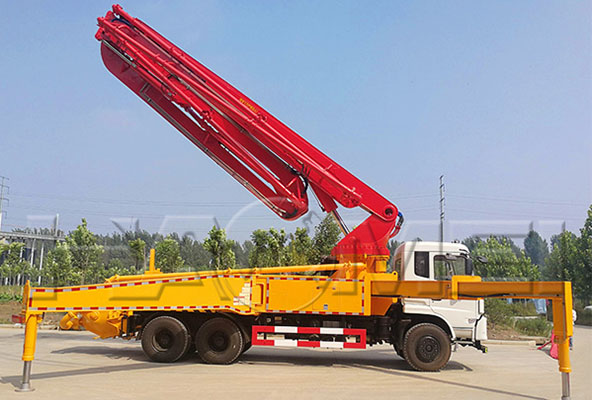
A small concrete pump truck was modified on the chassis of a loading truck. The chassis is equipped with devices for hydraulic transmission, pumping, stirring, concrete distributing and other purposes. If you want to buy concrete pump truck products, here is some information about chassis and hydraulic drive parts of a small concrete pump truck.

The chassis of a small pump truck is the most expensive part and it will cost most in your future maintenance. A good chassis is crucial in ensuring the official launch of the work and the safety of the driver. Therefore, you must attach enough importance to it when purchasing a pump truck. In judging quality of a chassis, you should focus on power and torque of the engine, fuel consumption, tires, frame, driving comfort and emission standards. In addition to considering the performance of the chassis and whether the chassis can be provided with timely maintenance support and spare parts supply by the chassis manufacturer, the user must also take into account the local emission rules, his budget and the amount of transportation. The fuller is the workload, the higher the reliability requirements for a concrete pump for sale is.
At present, all small concrete pump trucks at home and abroad adopt hydraulic transmission system, which is mainly composed of a gear pump, a hydraulic motor and a current collecting block. The current collecting block is integrated into one valve block by two overflow valves, a manual three-position four-way reversing valve, a hydraulically controlled two-position four-way valve and a hydraulic control spring reset two-position four-way valve. The current collecting block has the functions of controlling the hydraulic motor to automatically reverse, restoring the positive transmission and manually controlling forward and reverse. The working principle of the hydraulic system of a boom pump truck is as below. When the stirring blade is caught by the aggregate, the oil pressure of the hydraulic motor inlet oil passage rises, and the reverse overflow valve opens when the stirring blade reaches 11 MPa, then the hydraulic oil is reset by the check valve to make the hydraulic control spring reset the four-way. When the valve is reversed, the hydraulically controlled 2/2-way valve changes direction, so that the oil outlet of the hydraulic motor becomes the inlet port, and the hydraulic motor reverses. When the resisting aggregate of the stirring blade is removed, the valves return to the original state, and the hydraulic motor rotates forward.